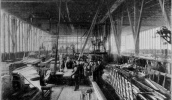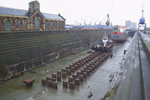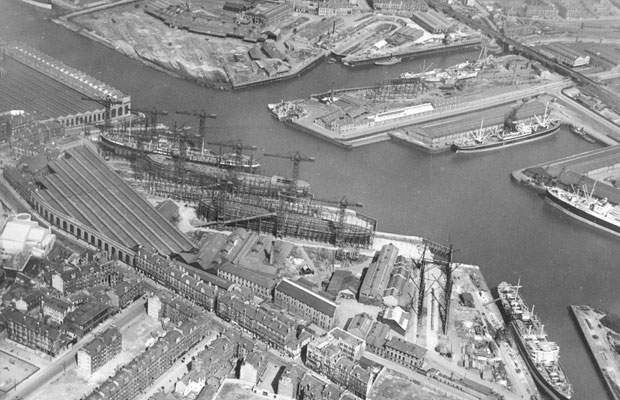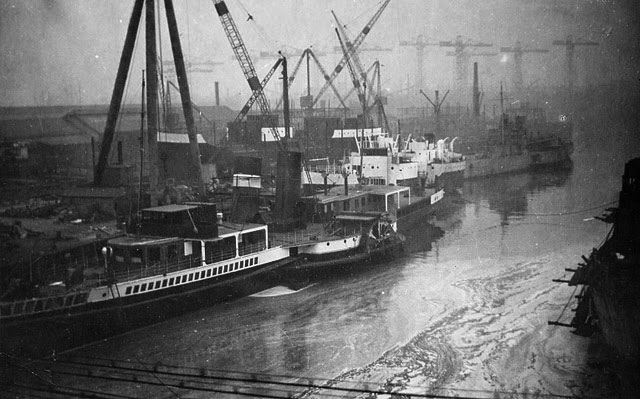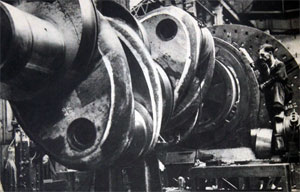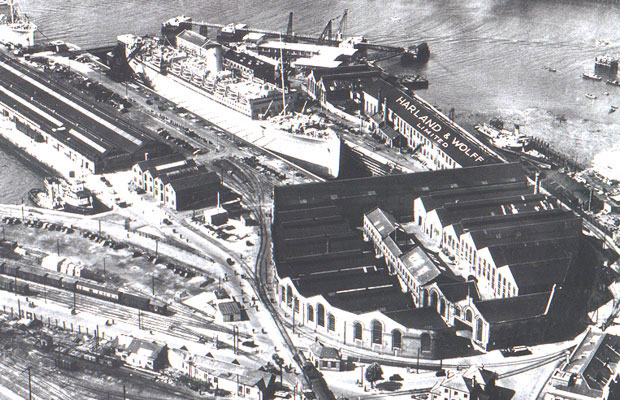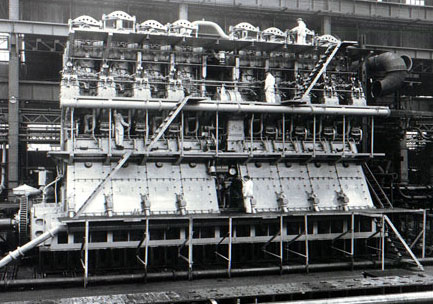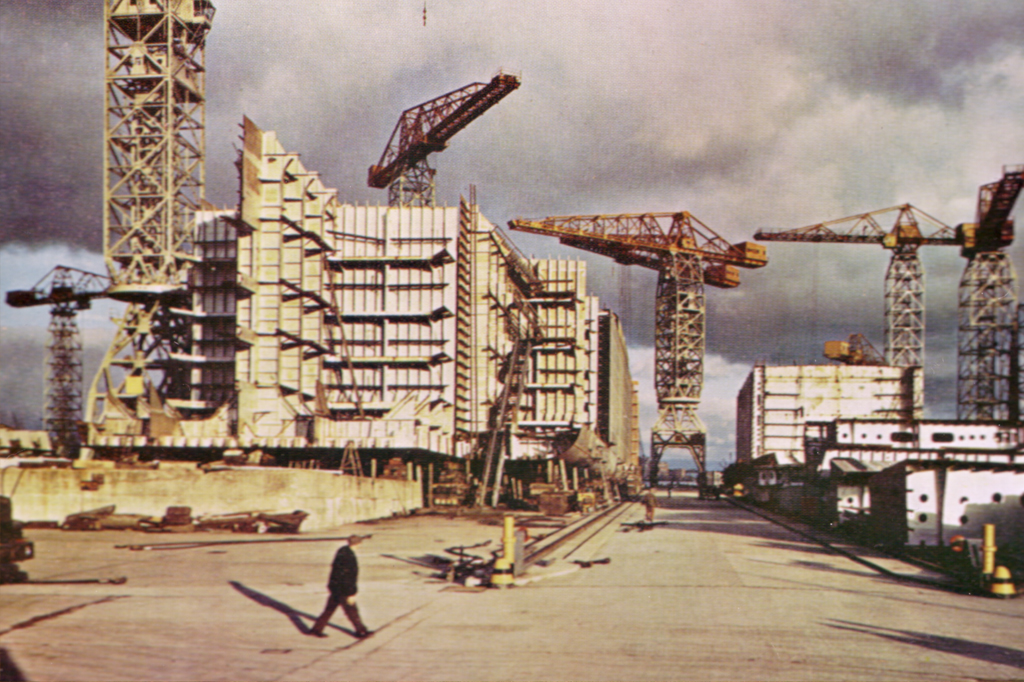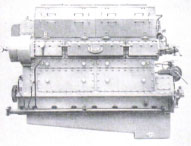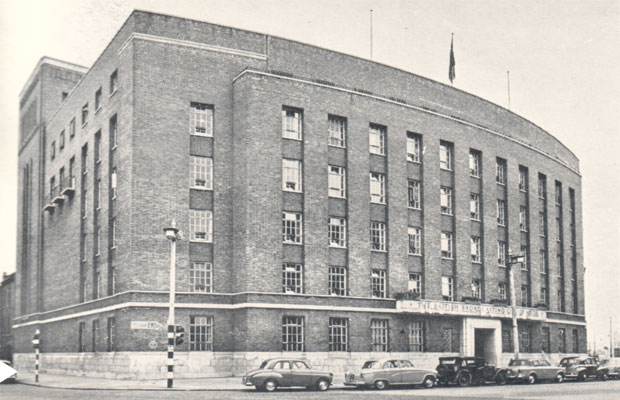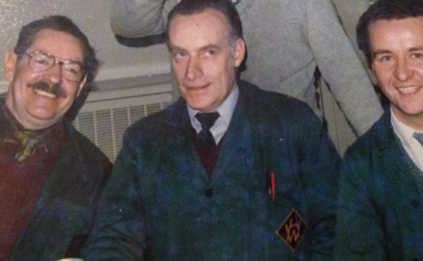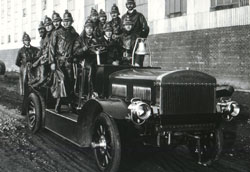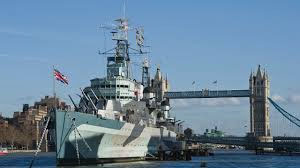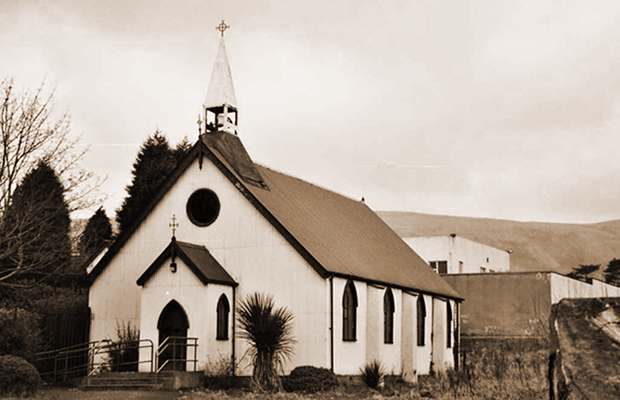Gate No. 7 holds the key to many a future
During the annual apprentice prize giving ceremony earlier this year Mr. R. S. Punt, the Managing Director, told guests that at the present moment no less than 851 apprentices were in training with the Company. As this total represents nearly 10 per cent of our total workforce ‘H & W News’ decided to have a closer look at apprentice training and apprentices.
Gate No. 7, Queen’s Road, is the entrance to the Apprentice Training School, and it is here that apprentices, or rather would-be apprentices get their first look at Harland and Wolff, Limited. The firm encourages early application for apprenticeships and most applications are made by boys of 15 to 15 1/2 despite the fact that formal training doesn’t begin until they are 16 or 16 1/2. The reason for early application is that the selection procedure takes quite a time as normally there are some 500 applications a year for less than 200 places, and in order to be scrupulously fair in their selection procedures the Training Centre staff interview every eligible applicant. Incidentally, although throughout this article we will be using the masculine—boys, lads, etc.—girls are eligible for apprenticeships just the same as boys, although normally very few girls apply. Nevertheless two did apply last year but unfortunately did not pass selection procedure.
The selection procedure consists of three major elements. The first is the level of education. Applicants are not required to have umpteen ‘O’ levels or ‘A’ levels. In fact neither of these is required, but boys should have had a good general level of education. The second element is the aptitude test. As someone who is completely ham-fisted is never likely to make a good craftsman and someone who is unable to measure an item in millimetres or centimetres or measure angles is not the sort of person most likely to succeed as a shipbuilder it is as well to find this out before the boy commits himself to four years training.
Finally, the third element is a character assessment which is made up by our Training Centre staff during the interview and the aptitude tests. In order to make sure that our recruitment procedure is scrupulously fair to applicants no outside influences are allowed to play any part in the selection of boys, and it hascome as a surprise to some fathers already working in the Company to find that their sons do not automatically qualify for an apprenticeship. In the same way religion and school play no part in the selection either. No boy is asked to state his religion and at no time is any applicant required to state the name of his school. In this manner the Company’s sole criterion in the recruitment of personnel fitness for the job is satisfied. Once they have passed the hurdle of selection what faces our “new starts”?
Every apprentice, apart from joiners who go to a Government Training School and painters who go direct to the Paint Department, undertakes six months basic training in the Training Centre. During this period apprentices are taught fundamental skills. They learn how to measure, cut, file, weld, burn, and generally handle the basic raw material of shipbuilding—steel Also during this time the boys learn to identify the various parts of a ship’s structure so that the technical language of the shipyard becomes part of their everyday vocabulary. At the end of these first six months steelworker apprentices move out into the shipyard where under the guidance of skilled journeymen they put into practice the burning, welding and other techniques they have learned in the Centre. Electrical, mechanical engineering, plumbers, sheet metalworkers, coppersmiths and boilermakers apprentices continue in the Centre for another six months, learning the more advanced techniques needed in their trades, and then at the end of the year they, too, move out into the world of production to practise their trades under the eyes of a journeyman.
Student Apprentices
The selection of student Apprentices, i.e. those who wish to study naval architecture, planning or estimating, follows the same procedure as that of craft apprentices, but in this case applicants must have at least four ‘O’ level passes (of which two must be maths and a science subject) to their credit. The first six months of their training is spent in the Training Centre to give them the same grounding in skills and the knowledge of the technical aspects of building ships. At the end of this six months period they then go to drawing offices for more formal training in naval architecture, etc. Later on during training student apprentices return to the works or shipyard for six months to jive them acclimatisation in thee practical work of building ships or engines.

Training Centre with Denis McGaffin (Apprentice) and George Quail (Electrical Instructor)
All the instructors on the Training Centre staff have themselves had considerable experience in the subjects they teach and are therefore fully able to instruct in the basic skills required by the students. Training must, however, keep pace with developments, and as the type of vessel we build changes, so too must the syllabus for our apprentices in order to keep their instruction abreast of the changing demands of the shipping industry and of the classification societies. The improvement of techniques and the introduction of higher standards of operation required to meet such demands is accomplished through a system of modular training. In the case of engineering and electrical apprentices it is usual for each boy to receive two periods of post-modular training during his first year experience. The training module consists of a period of approximately nine weeks, spent off the job, during which apprentices receive a set course designed to bring their skills up to a required standard. For engineering apprentices this would involve tuition in fitting and erecting, or in machining and turning, etc. Electricians, in their modular training periods, are taught how to wind armatures of electric motors and generators and alternator stators. While the modules are aimed basically at improving an apprentice’s skill they also act as a monitor of his development outside the Training Centre and therefore provide a check on his overall development. Apprentices completing the modules return to normal work where they will be expected and required to work to their newly acquired standards of skill. Steelworker apprentices also return to the Training Centre during their first year of “on the job” training to undergo tuition in the more skilled aspects of steelworking, welding and burning. During this time they can also be given instruction in lining-off and other duties associated with steelworking. During training all apprentices, both craft and students, have opportunities for day release classes and the Company actively encourages further education through the provision of time off for tuition, enrolment, examination fees, and also the presentation of money awards for success in external examinations. Apprenticeship normally finishes after a boy has attained the age of 20, except where he has lost time during his period of apprenticeship. Where he remains at full time education to gain academic qualifications beyond the age of 16 a boy may be eligible to be credited with time towards the completion of his apprenticeship.
Training Centre - Gate No.7, Queen's Road

|
|
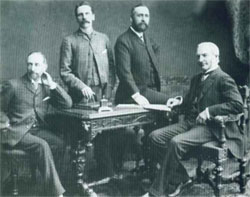 The PartnersHarland, Wolff, Pirrie and Wilson
The PartnersHarland, Wolff, Pirrie and Wilson
 The HatsChairmen, MD's, CEO's
The HatsChairmen, MD's, CEO's
 Sir Frederick RebbeckChairman 1930-41 1944-62
Sir Frederick RebbeckChairman 1930-41 1944-62
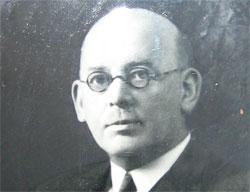 Sir Charles PalmourChairman 1941-1944
Sir Charles PalmourChairman 1941-1944
 John S BallieChairman 1962-1965
John S BallieChairman 1962-1965
 Dr Dennis RebbeckChairman 1965-1966
Dr Dennis RebbeckChairman 1965-1966
 Sir John MallabarChairman 1966-1970
Sir John MallabarChairman 1966-1970
 Joe R EdwardsChairman 1970
Joe R EdwardsChairman 1970
 Alan WattActing Chairman 1970-1971
Alan WattActing Chairman 1970-1971
 Lord RochdaleChairman 1971- 1975
Lord RochdaleChairman 1971- 1975
 Sir Brian MortonChairman 1975-1980
Sir Brian MortonChairman 1975-1980
 Victor Alexander CookeChairman 1980-1981)
Victor Alexander CookeChairman 1980-1981)
 Vivian WadsworthChairman 1981-1982
Vivian WadsworthChairman 1981-1982
 Sir John ParkerChairman 1982-1992
Sir John ParkerChairman 1982-1992
 Islandmen(and Women)
Islandmen(and Women)
 Save our ShipyardSupport and solidarity
Save our ShipyardSupport and solidarity
 The War MemorialsWe Will Remember Them
The War MemorialsWe Will Remember Them
 The Bible Class
The Bible Class
 Nicknames
Nicknames
 The Yarns(and Tall Tales)
The Yarns(and Tall Tales)
 The Shipyard IndentureJW Mullholland
The Shipyard IndentureJW Mullholland

